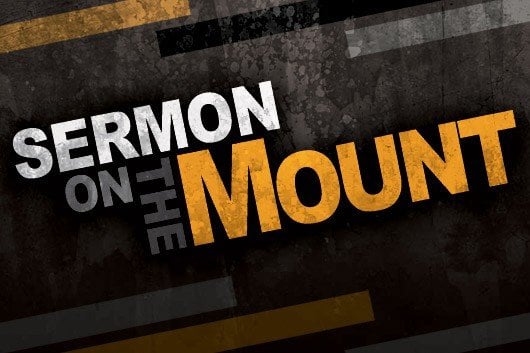⏱️ Estimated Reading Time: 7 min read
Editor’s note: The purpose of this series is to walk our readers through the Sermon on the Mount in Matthew 5-7 in order to help them understand what it teaches and how to apply it to our lives. This is our first such series here at Servants of Grace through an extended biblical passage and is part of our larger commitment to help Christians learn to read, interpret, reflect, and apply the Bible to their own lives.
- Dave opened the series by looking at Matthew 5:1-3.
- In the second post in this series, Dave explored Matthew 5:4.
- In the third post in this series, Zach looked at Matthew 5:5.
- In the fourth post in this series, Jason looked at Matthew 5:6.
- In the fifth post in this series, Dave looked at Matthew 5:7.
- Dave looked at Matthew 5:8.
- Dave looked at Matthew 5:9.
- Jason looked at Matthew 5:10-12.
- Dave wrote on Matthew 5:13-16.
- Mike Boling wrote on Matthew 5:17-20.
- Dave Dunham wrote on Matthew 5:21-26.
- Dave wrote on Matthew 5:27-30.
- Dave wrote on Matthew 5:31-32.
- Dave wrote on Matthew 5:33-37.
- Dave wrote on Matthew 5:38-42.
- Mike wrote on Matthew 5:43-48.
- Zach wrote on Matthew 6:1-4.
- Dave wrote on Matthew 6:5-8.
- Jason wrote on Matthew 6:9.
- Matt Adams wrote on Matthew 6:10.
- Dave wrote on Matthew 6:11.
- Dave wrote on Matthew 6:12, 14-15.
- David Dunham wrote on Matthew 6:13.
- Dave wrote on Matthew 6:16-18.
- Jason wrote on Matthew 6:19-24.
- Dave wrote on Matthew 6:25-34.
- Dave wrote on Matthew 7:1-6.
- Dave wrote on Matthew 7:7-12.
- Dave wrote on Matthew 7:13-20.
- Dave wrote on Matthew 7:21-23.
- Matthew Adams wrote on Matthew 7:24-27.
- Today Jason finishes our series on the Sermon on the Mount looking at Matthew 7:28-29.
**************************************************
Matthew 7:28-29, “And when Jesus finished these sayings, the crowds were astonished at his teaching, for he was teaching them as one who had authority, and not as their scribes.”
At last we arrive to the final few verses of the Sermon on the Mount. Jesus Christ has come to explain the doctrinal parameters of His Kingdom, citing that He did not come to abolish the Law and the Prophets, but instead, He came to fulfill them—that is, establish them (Matthew 5:17-18). The conquering King who has come to vanquish Satan has brought the Kingdom of Heaven to bear on earth as it is in heaven (Mt. 4:17; 6:10). In a sense, Adam sold his birthright to Satan, and the Father of Lies took God’s regency that was given to Adam, stole it, and propagated the anti-gospel: If man worships Satan, he can be like God. Satan tried to trick Jesus with the very same message (Mt. 4:1-11), but Jesus did not falter. Where Adam failed, Jesus succeeded.
The Sermon on the Mount is an all-out offensive measure against the kingdom of darkness. King Jesus, who would be enthroned after His death, resurrection, and ascension, came to take back that which rightfully belonged to covenant obedient men: dominion in the world. That the Christ would come to save His people from their sins was already a welcomed prophecy; that He would come with right doctrine, less so. The text before us makes it plain: Jesus has pedagogical authority. Jesus is not only the Teacher of Israel, He is the doctrinal gatekeeper as well. His Kingdom agenda comes with power and dogma. Jesus came teaching the Kingdom and demonstrating the Kingdom.
Pedagogy
Knowing full well the extent of Israel’s broken system, Jesus came to correct the aberrant teachings of the Pharisees. (Remember: Jesus often said in the Sermon, “You have heard it said, but I say…”) It is no wonder that the crowds, scribes and other religious leaders heard the Sermon and were “astonished.” They were utterly amazed “at his teaching.” The Authorized Version (KJV) translates the noun as “doctrine.” As the crowds listened intently they were blown away by the content. Jesus’ theology was (and is!) worthy of astonishment. (Later on, Jesus will astonish others in the synagogue at Nazareth, leaving people to ask a question: “Where did this man get this wisdom and these mighty works?” (Mt. 13:54).
One thing we have to keep in mind: Jesus is not teaching anything new. He’s already told us that He did not come to abolish the Law; He didn’t come to set it aside and set up something new. Instead, Jesus came to bring all of the Law and the Prophets—the entirety of the Old Testament canon—to it’s intended point, namely, under the Lordship of Himself. All of the teaching of Scripture from Genesis 1:1 to very last period of the book of Revelation sits under the Lordship of Christ. The teachings of Jesus did contradict the teachings of men, however. The “You have heard it said” part was not a critique or change of Old Testament Law; it was a critique and change in Pharisaical/Rabbinical “law.” Their teachings were pseudo-teachings. In fact, their teachings stemmed from both oral traditions and written rabbinical teachings. Commenting on the Law of God, the Rabbi’s sought to interpret Old Testament Scripture in such a way as to, oftentimes, suit their fancy. It was arbitrary and false. Jesus will have none of it. In fact, Jesus came to seek and save sound doctrine, too. “But I say,” comes from someone with that kind of authority.
Authority
The crowds were astonished at the content of Jesus’ teaching. But they were even more astonished at how Jesus taught. Jesus didn’t quote the dead guys like the scribes often did. No, Jesus took Scripture and situated it under His authoritative hand. Jesus’ interpretation of the Law of God was couched in Him. “But I say” can only come from someone with God-given authority. For the scribes, their authorities were dead. They merely clung to old tradition as a source of authority. But not Jesus, no, He took the Scriptures and demonstrated that their true meaning can only be understood through and in Him. Only by building one’s life on the rock of Christ can someone withstand the judgment (storms) of God.
The reason the crowds were astonished is because Jesus didn’t fit the rabbinical mold. He didn’t bother footnoting the dead rabbi’s. He didn’t bother relying on the traditions of the teachers of old. Jesus relied on His very own authoritative position as the King of kings and Lord of lords. Because He is the sovereign King and its righteous messenger, Jesus can take the Law of God—indeed the teachings of the entire Bible—and put them underneath His divine authority.
Which is why you and I can trust the Bible. We can trust what the Word of God teaches. It contains everything we need for life and doctrine (1 Timothy 4:16), holiness and creed. What we need to battle sin is the Holy-Spirit-inspired Scriptures that attest to the Kingship of Christ.
Are you astonished? Are you amazed at the authority of this man, this God-Man? The reason the Sermon finishes out on this note is because these two verses tell us exactly how we should feel. As we read the Word of God, particularly the greatest sermon ever preached here in Matthew 5-7, astonishment should be our demeanor. We’re amazed at technology and this a true and right response. But those things cannot captivate and keep our gaze—only Christ and His doctrine can do such a thing. Friends: behold your King.



